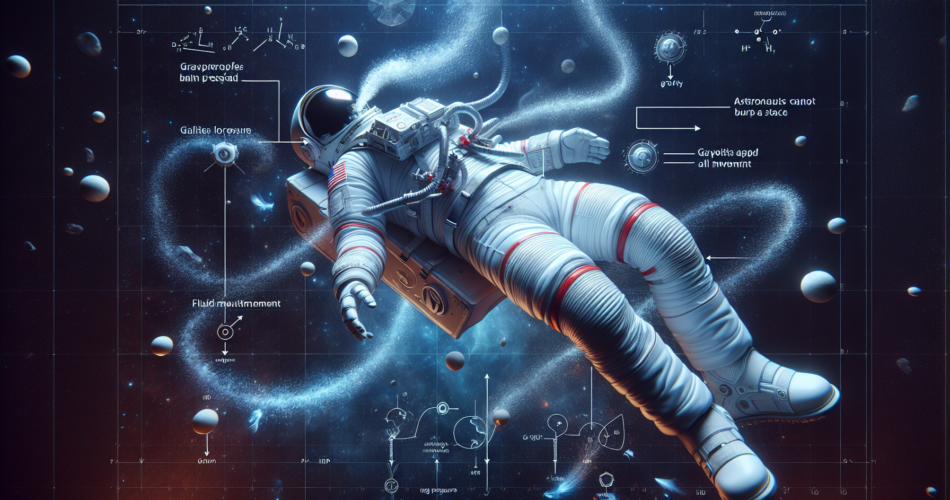The phenomenon of astronauts being unable to burp in the microgravity environment of space has intrigued scientists and the public alike. While it might seem trivial, understanding the science behind this inability reveals a complex interplay of physics and biology. Burping is a commonplace human action, often associated with the release of gas from the stomach after eating or drinking. However, in space, where the rules of physics differ from those on Earth, this simple act becomes a challenge. This article explores the underlying science that explains why astronauts can’t burp in space through the lenses of gas behavior in microgravity and the roles of pressure and fluid dynamics in space digestion.
Understanding the Physics of Gas Behavior in Microgravity
In a typical Earth environment, the act of burping is primarily influenced by gravity, which helps separate gas from liquid in the stomach. In microgravity, however, the usual buoyancy-driven behavior of gas and liquid is disrupted. On Earth, when a person burps, gas rises to the top of the stomach due to gravitational pull, allowing it to escape through the esophagus. In space, the absence of gravity means that gas does not naturally separate from liquids in the stomach, leading to a unique situation where gas can become trapped.
This trapped gas not only stays within the digestive system but also alters the dynamics of digestion itself. Without the buoyancy effect, the natural flow of gas and liquid is impeded, and the esophageal sphincter—the muscle controlling the passage between the stomach and esophagus—fails to respond as it would under normal gravity conditions. As a result, astronauts may feel an uncomfortable buildup of gas but are unable to release it in a typical manner, leading to potential discomfort and bloating.
Additionally, the behavior of gas in microgravity is governed by the ideal gas law, which states that the volume of gas is inversely proportional to pressure. In the confined environment of a spacecraft, the pressure dynamics can further complicate gas behavior. As astronauts consume food and beverages, the introduction of additional gas and liquids can create a complex interaction, where the usual release mechanisms are ineffective. This results in the accumulation of gas, which can lead to discomfort and an altered sense of satiety, impacting overall well-being during missions.
The Role of Pressure and Fluid Dynamics in Space Digestion
The pressure within the gastrointestinal tract plays a crucial role in digestion, and it operates differently in microgravity compared to Earth. On Earth, the pressure gradient created by gravity allows for smoother transitions of food and gas through the digestive system. However, in a microgravity environment, this pressure gradient is absent, and the fluid dynamics of digestion become altered. The normal peristaltic movements that help expel gas and move food along the digestive tract become less effective in the absence of gravitational forces.
These changes in fluid dynamics can lead to a condition known as fluid statics, where liquids and gases do not flow in the expected manner. For astronauts, this means that even the act of swallowing can be affected, as liquids do not flow downwards as they do on Earth. Instead, they can cling to surfaces within the mouth and esophagus, complicating the overall swallowing process. This can create a backlog of food and gas, further exacerbating the inability to burp.
Furthermore, the design of spacecraft and the impact of space travel on the human body can add layers of complexity to digestion. The closed environmental systems in spacecraft are pressurized, but this pressure does not replicate the gravitational conditions of Earth. As a result, the interactions between liquids and gases remain unpredictable. This creates a unique challenge for astronauts, who must adapt their eating habits and strategies to manage their digestive health during their missions, all while contending with the physiological changes that microgravity brings.
In conclusion, the inability of astronauts to burp in space is a fascinating intersection of physics, biology, and engineering. The unique conditions of microgravity disrupt the natural behaviors associated with digestion, leading to the entrapment of gas and discomfort. Understanding these scientific principles not only sheds light on a quirky aspect of space travel but also emphasizes the importance of ongoing research into human physiology in extreme environments. As humanity extends its reach into space, comprehending these fundamental challenges will be crucial for ensuring the health and safety of astronauts on future missions.

